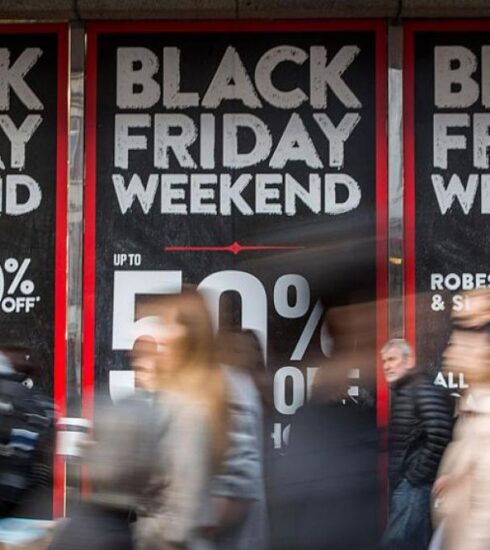Weekly Financial Market Update
November 21st, 2022 – Pound buoyed by stronger-than-expected UK retail sales

The pound strengthened on Friday, following the publication of the UK’s latest retail sales figures.
Sterling is struggling to fins support at the start of this week, with GBP/EUR muted at €1.1522 and GBP/USD retreating to $1.1822. GBP/CAD had dipped to CA$1.5868, while GBP/AUD and GBP/NZD hold steady at AU$1.7825 and NZ$1.9303, respectively.
Will a gloomy market mood see the US dollar open this week on the front foot?
The pound struck higher at the end of last week’s session as some stronger-than-expected domestic retail sales data offered some respite from the recent doom and gloom surrounding the UK economy. Sales growth rebounded by 0.6% in October. Rising from –1.5% in September and beating forecasts for a more modest 0.3% increase. However, analysts were quick to point out this uptick in sales growth came on the back of an exceptionally weak month and that retail activity is likely to remain muted in the months to come.
The euro also managed to catch some bids on Friday, with the uptick in the single currency linked to some hawkish comments from European Central Bank (ECB) President Christine Lagarde. Lagarde reiterated that the ECB will continue to raise interest rates and that this is the bank’s main tool for combating inflation.
At the same time, the US dollar found itself on the back foot at the end of last week, with a bullish market mood and drop in US Treasury yields undermining the appeal of the safe-haven currency.
In the absence of any notable data from the UK, Eurozone and the US, movement in the currency market today is likely to be linked to wider market sentiment, with the US dollar off to a strong start amid a souring market mood.
Looking ahead to a little later in the week the release of the UK’s latest public sector borrowing figures could influence the direction of the pound. Will a sharp rise in borrowing costs following the disastrous mini-budget lead to a large hole in public finances in October?
For EUR investors the publication of the Eurozone’s latest consumer confidence index could provide some support to the euro if November’s flash release reports another uptick in sentiment.
Meanwhile, USD investors may look to a speech by Federal Reserve policymaker Loretta Mester for fresh impetus for movement.
November 14th, 2022 – Pound flip-flops amid bleak UK economic outlook

The pound continued to trade in a wide range last week. Sterling opened the session on strong footing as it recovered some of the previous week’s post Bank of England (BoE) losses.
The pound was unable to sustain these gains for long, with some increasingly gloomy business headlines from the UK pushing GBP exchange rates lower again in mid-week trade.
Sterling then rebounded sharply on Thursday as Prime Minister Rishi Sunak met with Irish Taoiseach Micheál Martin with GBP investors hopeful the talks could help thaw relations and pave the way towards resolving the Northern Ireland Protocol.
Closing out the week was the publication of the UK’s latest GDP figures, which applied fresh pressure to the pound after reporting the UK economy contracted in the third quarter.
Looking ahead, GBP investors may be kept on their toes by a week packed with high-impact UK data releases.
In addition to the UK’s latest jobs report, inflation data and retail sales figures, the government will publish its Autumn Statement this week. GBP investors may be particularly sensitive to Chancellor Jeremy Hunt’s spending and tax plans, in the wake of his predecessor’s mini-budget.
November 4th, 2022 – Pound nosedives as BoE warns of prolonged UK recession
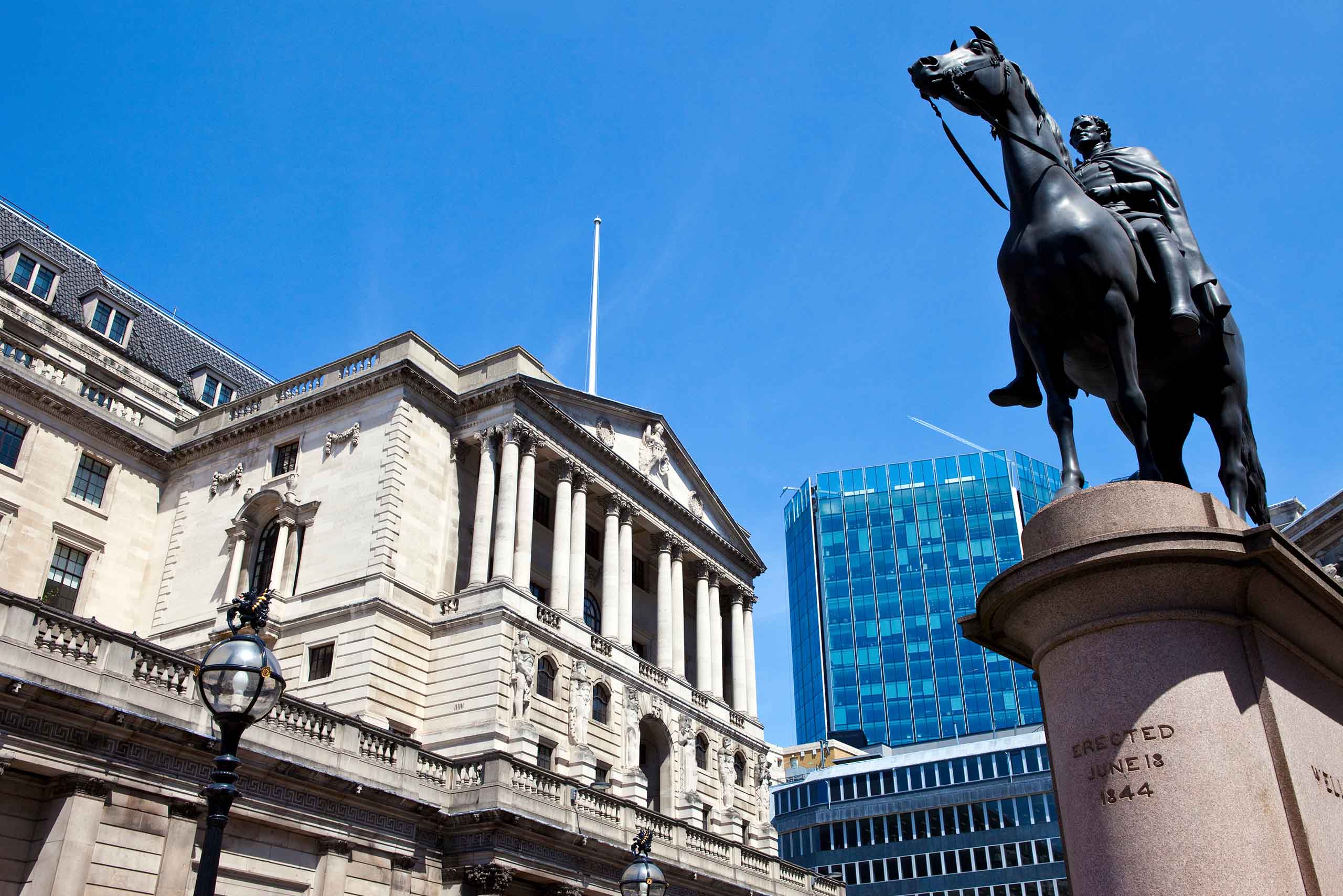
The pound fell off a cliff on Thursday as GBP investors were left reeling following the Bank of England’s (BoE) latest interest rate decision and economic forecasts.
Sterling is licking its wounds so far this morning, with GBP/EUR flat at €1.1467 and GBP/USD stable at $1.1196. GBP/CAD has dipped to C$1.5307, while GBP/AUD and GBP/NZD retreat to AU$1.7670 and NZ$1.9291, respectively.
Looking ahead, the focus today will be on the latest US payroll figures. Will a drop in US employment growth last month reverse some of the US dollar’s recent gains?
The pound nosedived yesterday in the wake of the Bank of England’s latest interest rate decision. While the BoE delivered its largest interest rate hike in 33 years, this was overshadowed by the bank’s incredibly bleak forecasts.The BoE warned the UK is likely already in a recession and that this downturn could last for two years. This would be the longest UK recession on record.
Adding to the downward pressure on Sterling were subsequent comments from BoE Governor Andrew Bailey, in which he suggested interest rates are unlikely to rise as sharply as markets currently expected.
Meanwhile, the US dollar continued to ride high on the back of the Federal Reserve’s surprisingly hawkish interest rate decision on Wednesday. Although the ‘Greenback’s ascent was capped after the ISM non-manufacturing PMI printed below expectations in October. At the same time, the euro traded without a strong directional bias on Thursday, amid ongoing concerns over the war in Ukraine.
In the spotlight today is the latest US non farm payroll reading. Consensus forecasts suggest October’s figures will report the US economy added 200,000 jobs versus the 263,000 in September, likely weakening the US dollar. However in the wake of Wednesday’s stronger-than-expected ADP employment figures, we could see the more influential payrolls surprise to the upside and extend the US dollar’s gains.
For EUR investors the focus today will be on a speech by European Central Bank (ECB) President Christine Lagarde. Will a cautious outlook from Lagarde see the euro close the week on a sour note? Finally in the absence of any notable UK data we could see the pound wallow as GBP investors continue to digest the BoE’s recession warning.
October 25th, 2022 – Pound steadies as Rishi Sunak confirmed as next UK PM

The pound steadied on Monday, after it was confirmed that Rishi Sunak won the Conservative leadership race and would become the UK’s next Prime Minister.
Sterling is holding its ground so far this morning, with GBP/EUR buoyed at €1.1457 and GBP/USD flat at $1.1300. GBP/CAD is rangebound at C$1.5500, while GBP/AUD and GBP/NZD hold steady at AU$1.7871 and NZ$1.9812, respectively. Sunak’s first moves in office will likely be the primary focus for GBP investors today.
The pound initially got off to a strong start this week, following the news that Boris Johnson had pulled out of the Tory leadership race. GBP investors feared a second Johnson premiership would have injected fresh political risk into Sterling. Despite being seen as a ‘safe pair of hands’, the pound had pared a good portion of these gains by the time that Rishi Sunak was confirmed as the new Prime Minister. This came in the wake of the latest UK PMIs, after October’s preliminary figures reported a larger-than-expected slump in the vital service sector.
The euro, struggled to attract support on Monday, following the publication of the Eurozone’s own PMI releases. These showed that the contraction in the bloc’s private sector deepened this month, with activity slowing to a near two-year low.
Meanwhile, trade in the US dollar was mixed yesterday. Suggestions the currency was oversold following Friday’s rout helped to push the ‘greenback’ higher. Before some abysmal US PMI releases curtailed USD demand later in the session.
October 18th, 2022 – Pound storms higher as Hunt scraps mini-budget
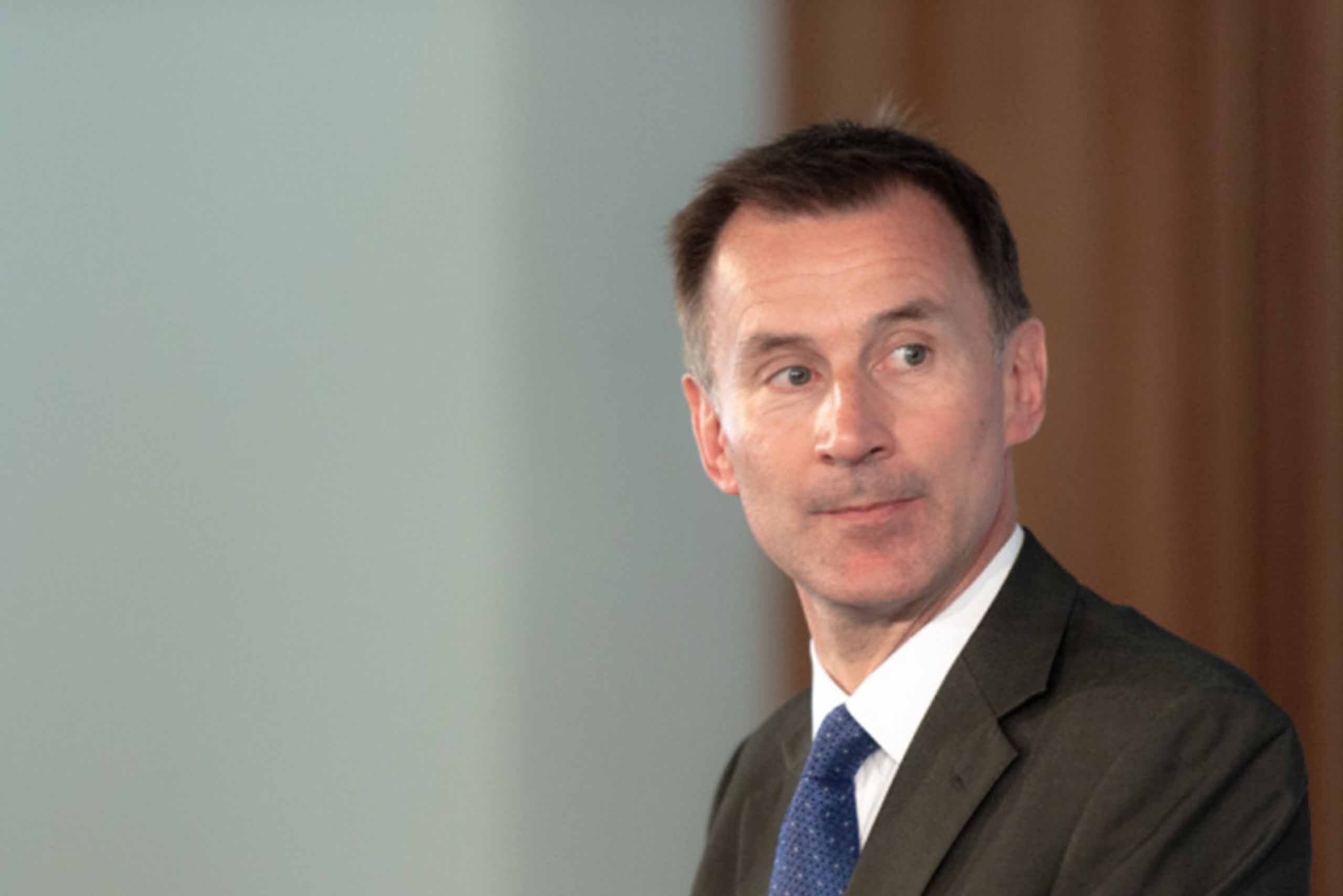
The pound rallied sharply on Monday as UK Chancellor Jeremy Hunt scrapped most of his predecessor’s mini-budget. Sterling is struggling to replicate this success this morning, with GBP/EUR sliding to €1.1534 and GBP/USD dipping to $1.1330. GBP/CAD and GBP/AUD are rangebound at C$1.5542 and AU$1.7994, respectively, while GBP/NZD plummets to NZ$1.9931.
Looking ahead, will doubts over the future of Liz Truss’s premiership lead the pound to erase some of its gains today?
The pound got off to a roaring start this week, with the currency recouping all of Friday’s losses, following an emergency statement from the UK’s new Chancellor, Jeremy Hunt. In a bid to ease recent UK market turmoil Hunt announced he would be reversing nearly all the tax cut and spending measures from his predecessor Kwasi Kwarteng’s mini-budget. Hunt’s announcement was seen as putting the government back on the path of financial orthodoxy and was welcomed by GBP investors. Although it was not enough to prevent the pound from weakening later in the evening.
The US dollar, meanwhile, slumped through Monday’s European trading session. A prevailing risk-on mood undermining demand for the safe-haven currency. USD exchange rates were also pressured by a fall in US Treasury yields.
The downside in the US dollar helped to bolster the euro yesterday thanks to the strong negative correlation between the pairing. However, these gains were capped amid ongoing concerns over the war in Ukraine and the negative impact it is having on the Eurozone economy.
October 10th, 2022 – Pound pares gains as bond yields rise again
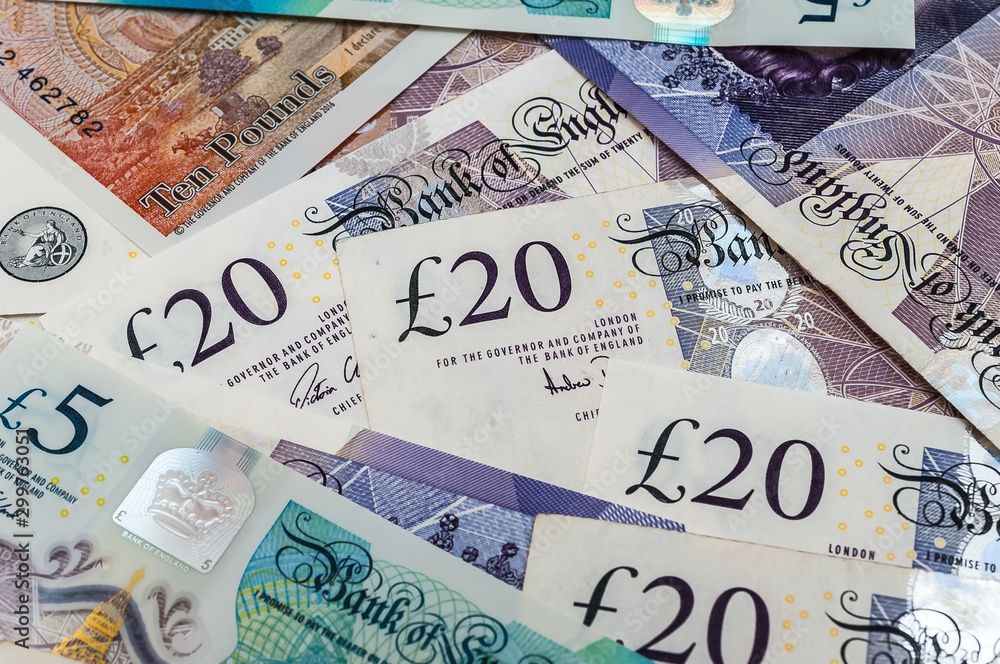
The pound enjoyed a strong start to last week’s trade. The Bank of England’s (BoE) emergency intervention in the bond markets seemed to be working, and the government’s U-turn on the top rate of tax showed encouraging pragmatism.
However, Sterling found its gains limited amid confusion over the publication date of the government’s forthcoming medium-term fiscal plan and the Office for Budget Responsibility’s (OBR) forecasts. Mid-week, UK government bonds began selling off again, unnerving GBP investors. A better-than-expected final services PMI score helped cushion the downside somewhat.
The UK then had its credit outlook downgraded for the second time in less than a week, as Fitch Ratings revised the UK’s prospects from ‘stable’ to ‘negative’. This saw GBP slip further. Initial dip-buying supported Sterling on Friday, until increased expectations of a Federal Reserve rate hike pushed UK bond yields higher, exacerbating worries about UK government debt.
This week, Sterling has seen some volatility amid escalating conflict in Ukraine and the news that Chancellor Kwasi Kwarteng will publish his fiscal plans three weeks earlier than originally planned. On Tuesday and Wednesday, respectively, we have the latest UK labour market report and GDP data. Strong employment figures and wage growth could support Sterling, but an expected contraction in the UK economy may pare any gains.
Meanwhile, UK politics and financial markets remain volatile as the government’s mini-budget continues to cause aftershocks. As a result, the pound may witness some turbulence.
October 3rd, 2022 – Sterling crisis averted by invention by the Bank of England (BoE).
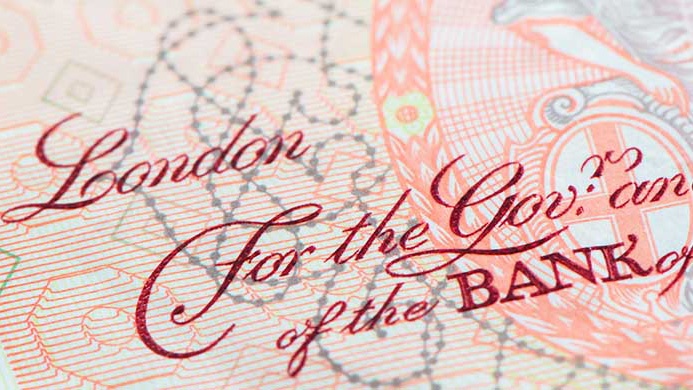
The US dollar, meanwhile, struck a new two-decade high amid a cautious market and aggressive Federal Reserve rate hike bets.
The pound opens this week on positive footing. GBP/EUR has climbed to €1.14, while GBP/USD is trading around US$1.12. Looking ahead, the latest US employment figures looks to be the most high-impact release on this week’s data calendar. Will a robust reading push the US dollar higher?
The pound fell off a cliff at the start of last week. The previous week’s Sterling selling bias remaining firmly in place after Chancellor Kwasi Kwarteng added fuel to the fire that was his mini budget, by signalling he was planning more tax cut plans. Speculation the Bank of England (BoE) could intervene with an emergency interest rate hike helped GBP exchange rates swiftly rebound from their worst levels.
Despite the BoE appearing to rule out an emergency hike Sterling was able to consolidate most of its gains, until Wednesday when a statement from the International Monetary Fund (IMF) criticising Kwarteng’s tax cut plans began to weigh on the pound again. However, a timely intervention from the BoE into the UK bond market, quickly revived GBP exchange rates again. The bank’s bond purchases helped to cap the selloff of government bonds.
The pound then looked to be well on the road to recovery, until comments from Liz Truss and Kwarteng, doubling down on their budget plans saw Sterling falter again at the end of the week. A U-turn from Kwarteng on his plans to cut taxes for high income earners has helped the pound to get off to a positive start this week, although it remains to be seen whether this will be enough to revive market confidence.
Kwarteng’s and Truss’s speeches at the Conservative party conference will therefore remain a key focus for GBP investors. If they are reluctant to reverse other parts of the mini-budget Sterling could face headwinds.
September 26th, 2022 – Pound collapses as government borrowing set to soar
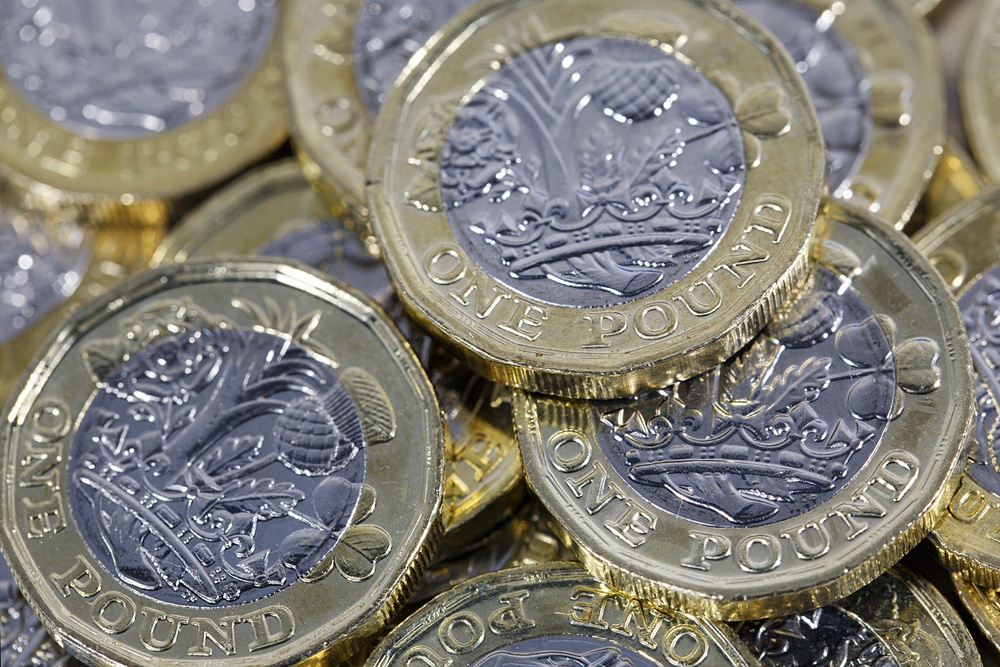
The pound collapsed last week as the government announced £45bn in unfunded tax cuts, shattering investor confidence in the UK. The US dollar, meanwhile, rose to a fresh two-decade high amid a souring market mood and above-forecast US data.
The pound remains in a precarious position so far this week. It managed to rebound after slumping overnight though it remains incredibly weak. GBP/EUR is at €1.12, while GBP/USD is trading around US$1.09. Looking ahead, new inflation data from the US and the eurozone could spark significant movement on Friday. In the meantime, UK markets are bracing for an emergency intervention from the Bank of England (BoE).
The pound was fairly muted early last week as UK markets closed for the Queen’s funeral. Midweek, troubling UK public sector borrowing figures saw Sterling slip. The government borrowed £11.8bn last month, above forecasts of £8.45bn, as soaring inflation pushed interest repayments to record highs.
GBP ticked higher ahead of an expected 75-bp rate rise from the BoE on Thursday, only to relinquish its gains after the central bank instead opted for a half-point hike. The pound then dropped off a cliff on Friday as Chancellor Kwasi Kwarteng announced £45bn in unfunded tax cuts. Kwarteng’s mini-budget saw investors lose confidence in government fiscal policy amid fears of surging inflation and unmanageable government debt. Government bonds, UK stocks and the pound all suffered a sell-off, with GBP hitting a fresh 37-year low against the US dollar.
This week, the sell-off in Sterling continued, partly due to comments from the Chancellor over the weekend saying that more tax cuts could be on the way. GBP/USD plunged to an all-time low, before rebounding on expectations that the BoE will step in.
Looking forward, GBP investors will likely remain focused on the current chaos in UK markets. Investors are pricing in a sharp rise in interest rates, with the BoE expected to intervene in some form in the coming days.An extreme intervention would be an emergency rate hike in order to shore up the pound. However, some economists think the BoE has little appetite for such a move. A surprise rate rise could bolster Sterling, although it could also simply trigger more anxiety among markets.
September 15th, 2022 – Pound firms amid uptick in core UK inflation

The pound rallied on Wednesday as GBP investors welcomed the publication of the UK’s latest inflation figures. Sterling’s momentum has not carried into today’s session however, with GBP/EUR muted at €1.1564 and GBP/USD subdued at $1.1522. GBP/AUD has slipped to AU$1.7052, while GBP/CAD and GBP/NZD hold steady at C$1.5182 and NZ$1.9185, respectively. Looking ahead, will another underwhelming US retail sales release infuse volatility into the US dollar this afternoon?
The pound stuck higher against most of its peers yesterday following the publication of the UK’s consumer price index. August’s CPI figures reported a surprise drop in headline inflation but saw core inflation climb to a new 30-year high. The uptick in underlying inflation was seen as placing more pressure on the Bank of England (BoE) to keep raising interest rates and buoyed GBP exchange rates.
The US dollar, meanwhile, relinquished some ground on Wednesday, as USD investors sought to book their profits following a sharp appreciation on Tuesday. At the same time, the euro was buoyed by its negative correlation with the US dollar, although a weaker-than-expected Eurozone industrial production release capped the upside in the single currency.
September 5th, 2022 – Pound collapses as UK woes intensify, US dollar hits 20-year high
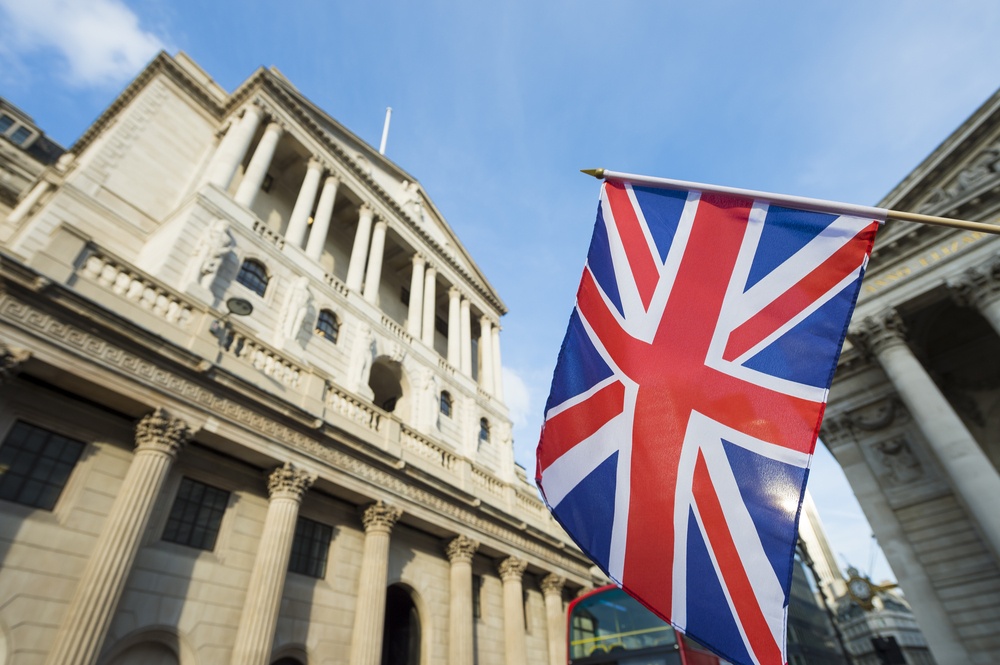
The pound slumped last week as the UK’s deteriorating economic outlook weighed heavily on Sterling. At the same time, the US dollar firmed to fresh two-decade highs amid a risk-off mood and Federal Reserve rate rise bets.
The pound remains subdued this week. GBP/USD is flat at $1.15 while GBP/EUR is recouping some losses, rising towards €1.16. Looking ahead, interest rate decisions in the Eurozone and Australia could prompt movement in their respective currencies, while the UK’s new prime minister is expected to unveil emergency policy measures.
The pound began selling off early last week as economists at Goldman Sachs added to a growing number of voices predicting a UK recession beginning this year. Goldman also warned that UK inflation could surge to 22% next year if energy prices continue to climb. Increased anxiety over the state of the UK’s public finances also hurt Sterling. Rising interest rates and expectations of another cost-of-living spending package saw government borrowing costs surge, with UK bond yields hitting an eight-year high. The pound refreshed multi-year lows against many of its peers.
GBP remained under pressure through to the end of the week. The Resolution Foundation released new research saying that rising energy bills could push 3 million more people into poverty in the UK.
The British Chambers of Commerce (BCC) then said that it believes the UK is already in a recession, urging the government to act as ‘time is fast running out’. After initially slipping to fresh lows this week Sterling has bounced back, seemingly having entered oversold conditions, as markets digest Liz Truss’s victory in the Tory leadership contest. Truss now faces a daunting task. The new PM is likely to announce urgent policy action to tackle the country’s cost-of-living crisis, and this could support Sterling.
However, some economists are concerned that Truss’s key policies could push inflation even higher while forcing the Bank of England (BoE) to continue aggressively hiking interest rates. If these concerns persist, GBP may continue to languish near recent lows.
September 2nd, 2022 – GBP/USD within spitting distance of March 2020 low in risk-off trade
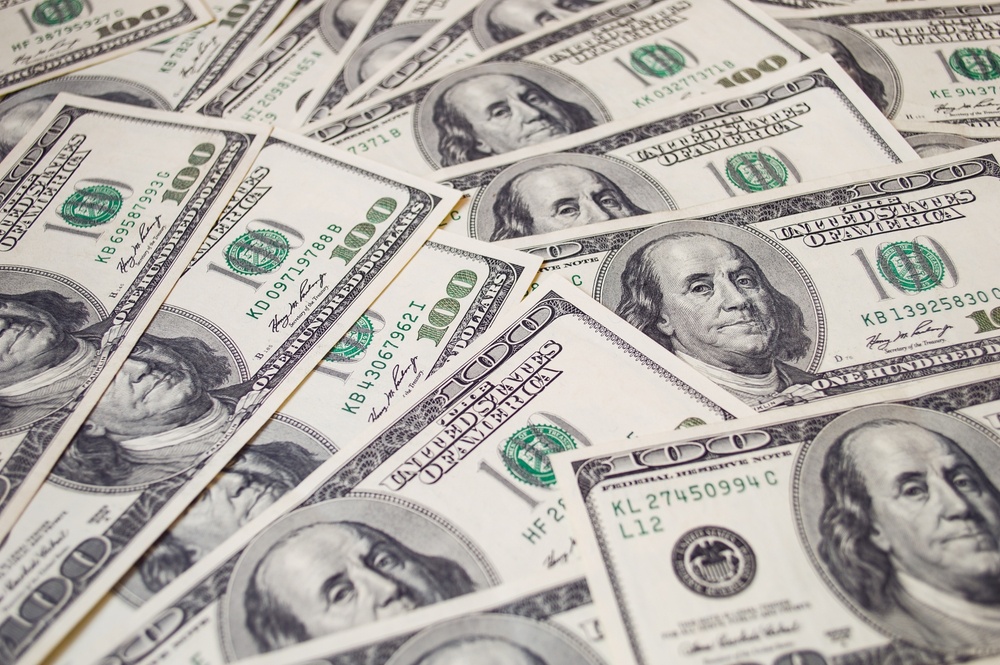
The US dollar continued to rally on Thursday, with the safe-haven currency being underpinned by a cautious market mood and upbeat US data.
Meanwhile trade in the pound is mixed so far this morning, with GBP/EUR slipping to €1.1579 and GBP/USD stable at $1.1549. GBP/CAD and GBP/AUD are holding steady at C$1.5188 and AU$1.7004, respectively, while GBP/NZD climbs to NZ$1.9040. In the spotlight today we have the latest US payroll release. Could a sharper-than-expected fall in US employment growth knock the wind out of the US dollar?
The US dollar extended its bullish run yesterday as a prevailing risk-off mood saw investors continue to favour the safe-haven currency. Reinforcing the US dollar’s gains was the publication of the latest ISM manufacturing PMI.
August’s release reported the US factory sector continued to expand at the same pace as it did in July. Beating forecasts for a modest decline in activity and ending a three-month consecutive decline in growth. The continued upside in the US dollar pushed the euro lower on Thursday as a result of the negative correlation between the pairing. The single currency was also dented by a downward revision to the Eurozone’s manufacturing PMI in August.
Meanwhile, the pound remained on the back foot yesterday amid growing concern over the UK’s cost of living crisis. The continued slump in Sterling also appeared to be linked to concerns over a likely Liz Truss led government, amid uncertainty over her economic policies and the future independence of the Bank of England (BoE).
August 25th, 2022 – US dollar fluctuates amid mixed market mood
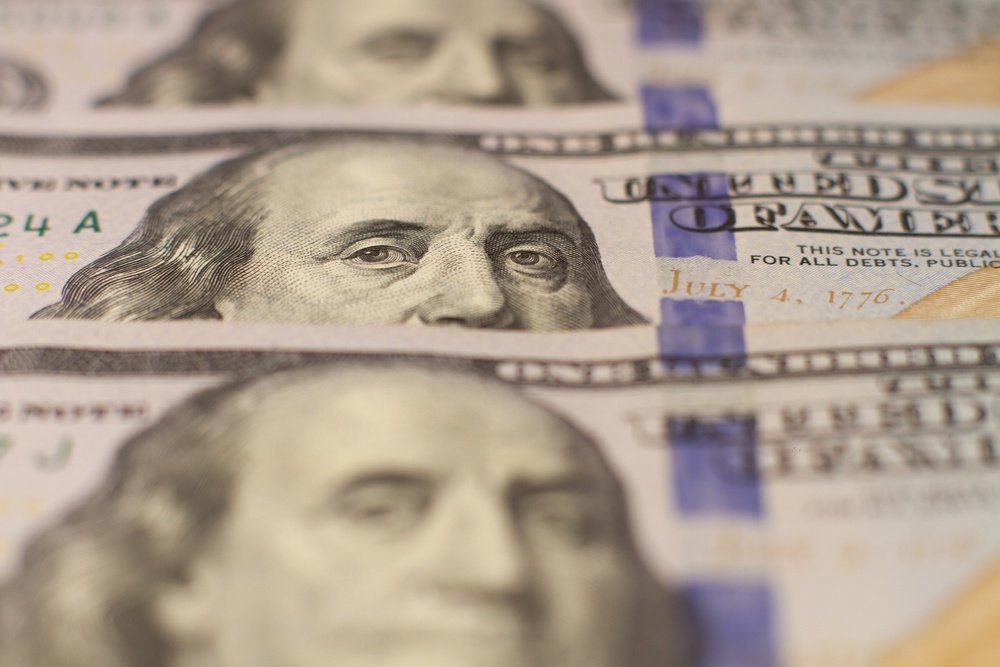
The US dollar traded in a wide range on Wednesday as a mixed market mood resulted in fluctuating demand for the safe-haven currency.
Meanwhile, trade in the pound is mixed so far this morning, with GBP/EUR muted at €1.1822 and GBP/USD climbing to $1.1854. GBP/CAD is rangebound at C$1.5308, while GBP/AUD and GBP/NZD tumble to AU$1.6990 and NZ$1.9013, respectively. Looking ahead, will hawkish expectations ahead of the Federal Reserve’s Jackson Hole symposium help to bolster the US dollar today?
Following Tuesday’s sizable USD selloff, the US dollar initially jumped yesterday, with investors favouring the safe-haven currency amid a cautious market mood. The ‘greenback’ also firmed on the back of a mixed US durable goods orders release. July’s figures reported goods orders stalled, missing forecasts for a 0.6% expansion down but saw growth in June revised up from 1.9% to 2.2%. However, the US dollar erased a good portion of its gains later in the session as market risk appetite started to improve. The upside in the US dollar kept a lid on the euro yesterday as a result of the strong negative correlation between the world’s most traded currency pairing.
Meanwhile, the pound initially held its ground on Wednesday amid growing expectations for another 50-basis point rate hike from the Bank of England (BoE) next month. But Sterling was unable to hold on to its best levels, succumbing later in the session to concerns over the UK’s economic outlook.
August 19th, 2022 – US dollar falters as risk appetite improves
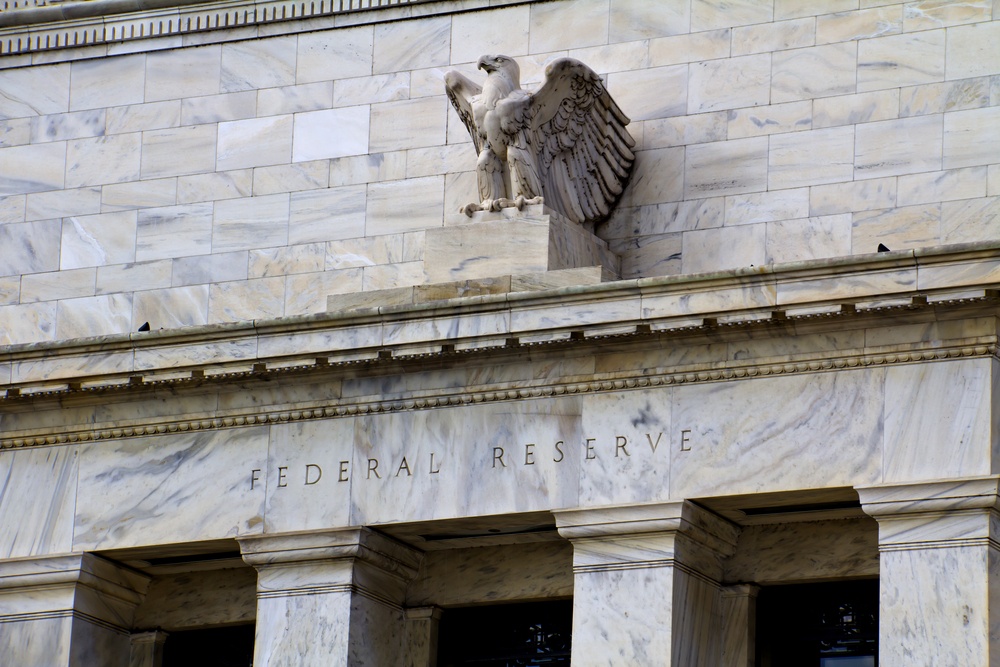
The US dollar was muted during Thursday’s European session as an improving market mood sapped demand for the safe-haven currency.
Meanwhile, the pound is struggling so far this morning, with GBP/EUR muted at €1.1813 and GBP/USD dipping to $1.1904. GBP/CAD is rangebound at C$1.5444, while GBP/AUD and GBP/NZD are subdued at AU$1.7234 and NZ$1.9100, respectively. In the spotlight today will be the UK’s latest retail sales figures. Will a surprise bump in sales growth last month help to underpin Sterling through today’s session?
| The US dollar’s recent winning streak appeared to run out of steam yesterday, with demand for the safe-haven currency waning amid a pick-up in market risk appetite. USD exchange rates remained steady despite the latest US jobless figures beating expectations, with new jobless claims unexpectedly dropping in the second week of July. The pound also struggled to find any strong directional bias on Thursday, Sterling sentiment remaining suppressed by economic concerns and political uncertainty. The euro, meanwhile, was able to draw support from the publication of the Eurozone’s consumer price index. July’s finalised figures confirmed inflation accelerated to a record high on 8.9% and underpinned expectations for another 50bps rate hike from the European Central Bank (ECB) next month. |



